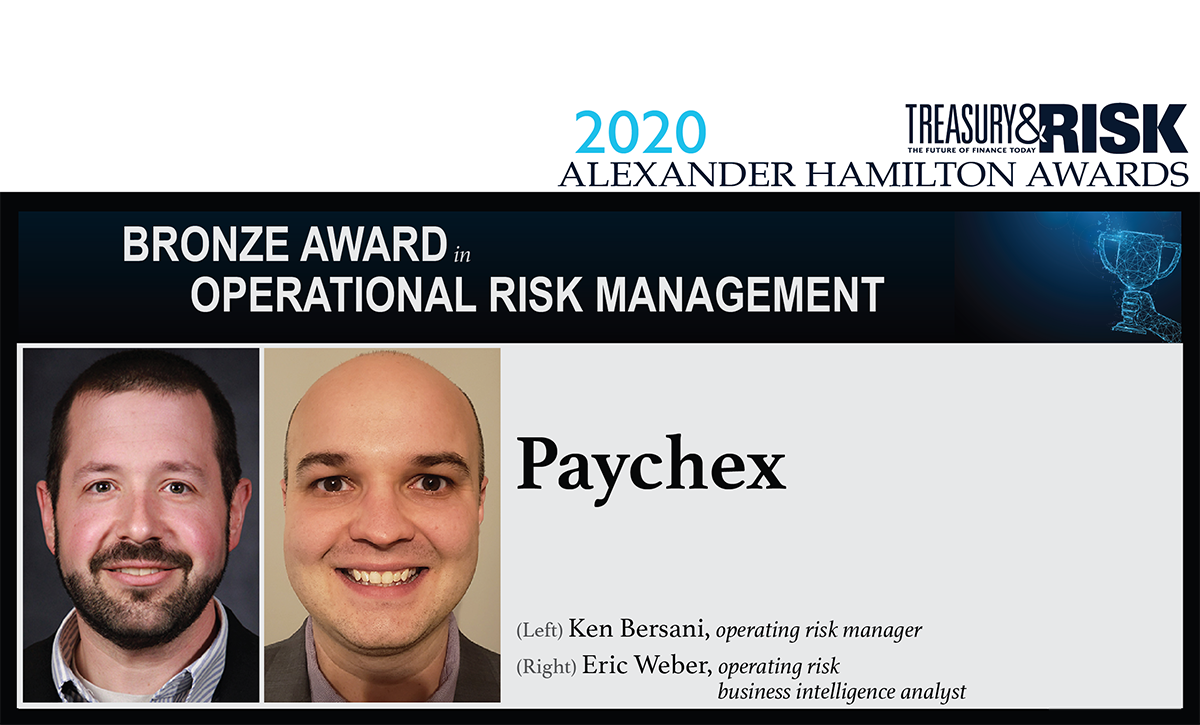
Rochester, New York-based Paychex provides payroll and human capital management services to more than 680,000 businesses across the United States. One of the services the company offers is payroll tax administration, through which it withholds payroll taxes from the paychecks of a client's employees, then files and pays those taxes on behalf of its client.
Not surprisingly for a company filing a large number of client tax returns, Paychex also files a lot of amended returns when information included on the original return changes or turns out to be incorrect. A couple of years ago, individuals throughout the company managed these amendments in a highly manual process.
Recommended For You
"Staff in our field locations had to manually submit requests to have amended returns completed," says Ken Bersani, Paychex's operating risk manager. "We were amending about 100,000 returns every year. Typically, the client would communicate to one of our payroll specialists that something had changed in their business. The payroll specialist would realize that change required amending returns we had already filed for them, and someone on staff would submit an amendment request to our department to start the process. The field location would also have to adjust the client billing to reflect the fee we charge for amending a tax return."
Bersani and his team reached out to field operations groups in an effort to help them reduce risk and streamline processes. In a cross-functional workshop focused on identifying pain points, the requests for tax return amendments came to the fore. The operating risk team immediately saw an opportunity to substantially increase efficiency.
"We have a very robust self-service tool, Paychex Flex, that our clients use to do their own payrolls online, often with zero interaction with our staff," he adds. "Yet if we needed to amend a tax return, the process was not automated at all. We had more than 60 people in the different business groups spending 10 to 15 minutes on each of the 100,000 amended returns. This wasted time they could have been spending on more value-added activities. It also introduced a risk of human error. It just didn't make sense for this to be such a manual process."
The operating risk team developed a plan to centralize and standardize the process for requesting amended returns. They were also interested in adding as much self-service and automation into the process as possible. That's when they saw a demonstration of testing software the Paychex IT group had developed in-house.
The tool brought robotic process automation (RPA) to the software development process. Eric Weber, operating risk business intelligence analyst for Paychex, describes it as a supercharged Excel macro that simulates human interactions in order to ensure the company's various applications respond appropriately. "We saw the potential for this technology to proactively identify returns that needed amendments, rather than relying on our staff in the field to generate and submit requests," Weber says.
He and his colleagues used the IT tool to build a robotic process that both creates amendment requests and adjusts billing to reflect them. Now, when a client changes something in the self-service portal that affects past tax returns, the solution generates a new instance of the amendment-request form. It automatically fills in about 85 percent of the form's fields, then generates an alert, proactively reaching out to the field staff to request the few remaining pieces of information.
"The process of requesting an amendment used to take the field 15 minutes; now it takes 2 minutes," Weber reports. "At the same time, the tool automatically adds the fee for the amended return to the client's bill. We've seen a 25 percent increase in submissions of amended returns since putting this tool in place because it proactively identifies every situation where an amended return is needed. As a result, it's had a meaningful impact on increasing gross revenue."
 Bersani reports that overall, employees are saving 6,000 hours a year on tasks related to generating and processing amended returns. "Rather than background administrative work, our field teams now have a lot more time for client interaction," he says. "Our quarterly employee survey shows that their job satisfaction has increased substantially because they are now focused on helping clients."
Bersani reports that overall, employees are saving 6,000 hours a year on tasks related to generating and processing amended returns. "Rather than background administrative work, our field teams now have a lot more time for client interaction," he says. "Our quarterly employee survey shows that their job satisfaction has increased substantially because they are now focused on helping clients."
Weber cites one more benefit of the process transformation: improved accuracy. "No matter how careful people are, the human element always introduces a risk of error," he says. "Removing almost all the manual work from the process minimizes that risk. We know if the tool generates an alert, something was actually changed in the self-service system. We can trust that everything is accurate."
Bersani sees this project as an illustration of the benefits of expanding the horizons of the risk management function. "Enabling the risk group to plug into all different facets of the company creates a chance to identify additional areas of opportunity," Bersani says. "Our operating risk group collaborated with IT to understand their testing tool, and we saw the opportunity to reduce risk by introducing automation for amended tax returns."
He adds that Paychex's risk operations team isn't resting on their laurels. "This project also allowed us to move forward with what we've learned and bring the same type of automation into other areas of risk," Bersani concludes. "Now, all disciplines within our risk department are looking at the automation tool and figuring out how they can best leverage it."
© Touchpoint Markets, All Rights Reserved. Request academic re-use from www.copyright.com. All other uses, submit a request to [email protected]. For more inforrmation visit Asset & Logo Licensing.



